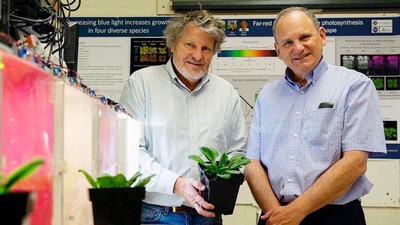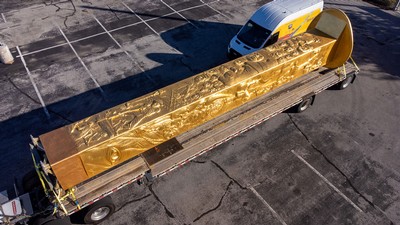'Journal of Nature' Report Links to USU Eastern Prehistoric Museum Director
The world of dinosaur studies seems as small as, well, dinosaur embryos. So when a paleontologist sneezes in China, Ken Carpenter, director and curator of paleontology at Utah State University Eastern Prehistoric Museum says “bless you.”
He gave such a blessing April 10 on new findings just out in the Journal of Nature that focuses on fossil dinosaur embryos. It is groundbreaking research in which Carpenter is the first academician cited in connection with his Cambridge University Press book Dinosaur Eggs and Babies.
No surprise either that he was the first person USA Today reporter Dan Vergano turned to for comment.
“It’s a very good article,” he told the reporter. “I agree with the interpretations.”
The wow factor in this newest study is discovery of well-preserved embryos at different stages of incubation outside of their shells from a sample of 200 bones among a clade known for gigantism, according to the Nature article.
The embryonic dinosaur bone bed was found in Lower Jurassic strata, the oldest in fossil record, near Dawa, China, on the South China Sea coast, east of Hong Kong. A slow moving flood some 200 million years ago helped to preserve a large collection of skeletal elements and eggshells.
Carpenter told USA Today that what is really notable in these latest published findings is the discovery of many individuals at different stages of development. Taken together, they show the progressive formation and growth of the skeleton in a dinosaur and this can be used as a roadmap to understand embryo development in other dinosaurs.
“What is also cool is that the bones suggest rapid growth and this study may at long last shed light on the mystery about how some of the giant dinosaurs got so big,” he said.
A close look at the tiny bones show numerous cavities, or vascular spaces, that indicate opportunities for continual growing — lots more growing. It implies shorter incubation times than their contemporaries and a capacity for rapid growth that was evidently maintained after these gangly soon-to-be goliaths cracked through their hard shells, according to the Nature report.
The Nature article began by citing Carpenter’s work, noting that fossil dinosaur embryos are surprisingly rare, being almost entirely restricted to Upper Cretaceous strata that record the late stages of non-avian dinosaur evolution.
Carpenter has authored two books on the topic of tiny titans. He said when the book was published in 1994 it garnered a lot of attention because it was the first book devoted solely to dinosaur eggs and hatchlings. It is the more technical of the two — a compilation of papers from international paleontologists, including experts from China, United States, Canada, Russia, Poland and Spain.
His other book, Eggs, Nests and Baby Dinosaurs by Indiana University Press, was published in 1999. It is a less technical treatment on the topic with about half devoted to the results in his first book, plus extensive treatment on reproductive biology, courtship, egg and embryo development and early growth.
Although demands on his time have kept him from doing much more on the topic since his last book, he said it pleases him to see others furthering the research.
“The two books stirred the interest in a whole new generation of young paleontologists,” he said. “They are carrying the ball.”
Related links:
Download PDF
Utah State University Eastern paleontologist Ken Carpenter is the go-to guy for comments on fossil dinosaur embryos.
Comments and questions regarding this article may be directed to the contact person listed on this page.






